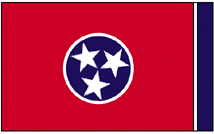[« Thought for the Day:] [The friend who forwarded this.... »]
03/16/2005: Achey Fakey News
Two good "zingers" about the Bush "Fake News' Biz. First, by Clarence Page (Chicago Tribune) called Fake news makes foul government "Jon Stewart's satirical "The Daily Show" on Comedy Central likes to call itself "No. 1 in fake news." Team Bush seems determined to challenge the show for the title--with our tax dollars.
In memos sent last week to federal agency heads, the Bush White House rejected a Government Accountability Office ruling that it is illegal for federal agencies to feed TV stations prepackaged "news stories" that do not disclose the government's role in producing them.
Fake-news stories, called "video news releases" in the public relations industry, are a huge business. The PR trade produces thousands a year, mostly for corporate clients. Designed to resemble independently reported news stories, these video news releases can be broadcast without editing and, to their everlasting shame, some TV stations have chosen to run them without identifying their government source.
All White House administrations use public funds to push their agendas, but they should make a decent effort to inform the public as to where the hype is coming from. Then voters can decide whether they think the money is well spent. But when TV stations put stories on the air without announcing that the stories are government-produced, the stations become megaphones for government propaganda.
Three times in recent months the Government Accountability Office ruled that the made-for-TV stories from the Department of Health and Human Services about the Medicare drug benefit and from the Office of National Drug Control Policy for the administration's anti-drug campaign violate federal laws against such covert propaganda. But the Bush administration's latest memos, first reported Sunday by the New York Times, absolve the fake stories where there is "no advocacy of a particular viewpoint" in "the legitimate provision of information" concerning government programs.
Let's get real. In today's politically charged climate, every government announcement reflects a "particular viewpoint," whether it concerns abstinence over condoms, oil drilling over preservation of the Alaska wildlife refuge or whatever.
Fake news came out of HHS under the Clinton administration too. But federal agencies under Clinton were tightwads compared to the Bush administration in regard to the practice. A recent study by congressional Democrats found that the Bush administration spent $254 million in its first term on public relations contracts, almost twice as much as the last Clinton administration spent, according to the Times.
If it was wrong for the Clintonites to send out fake news to local TV stations, it is twice as wrong for Team Bush to spend twice as much as the Clintonites did on the same questionable activity. Leadership in fake news is hardly an honorable title outside of Comedy Central or The Onion, a premier phony-news newspaper.
Unless Congress passes tougher laws, the onus to let the public know what they're watching ultimately lands firmly on the TV stations that broadcast the video news releases.
Just as newspaper reporters should not simply retype public-relations handouts, TV stations should clearly identify a government-produced report for what it is, government propaganda, so we the public can decide how much of it we want to believe.
In that spirit, it is piquantly appropriate that the new memos were revealed during Sunshine Week, which began Sunday. Organized by the American Society of Newspaper Editors, Sunshine Week features coverage and commentary by media across the country on threats to the public's right to know what our government is doing behind closed doors.
In the interest of fairness and balance, I feel obliged to note that even a seemingly inarguable principle such as open government comes under attack in these politically polarized times when it is trumpeted by media organizations.
For example, Cliff Kincaid of Accuracy in Media writes on the conservative watchdog group's Web site that it is hypocritical of media to tout open government while using anonymous sources in many news stories. "I agree that the government has to be held to a higher standard," he writes. "But for the media to come out and say they're going to do it when they've failed so miserably is laughable."
He has a point buried in his broad-brushed statement. Reporters never should be allowed to use anonymous sources to cover sloppy reporting. But government officials also should not use fake news, closed meetings or the secrecy stamp to cover up their own sloppy or destructive governance."
Next up: From the NY Times: And Now, the Counterfeit News"The Bush administration has come under a lot of criticism for its attempts to fob off government propaganda as genuine news reports. Whether federal agencies are purchasing the services of supposedly independent columnists or making videos extolling White House initiatives and then disguising them as TV news reports, that's wrong. But it is time to acknowledge that the nation's news organizations have played a large and unappetizing role in deceiving the public.
As documented this week in an article in The Times by David Barstow and Robin Stein, more than 20 federal agencies, including the State Department and the Defense Department, now create fake news clips. The Bush administration spent $254 million in its first four years on contracts with public relations firms, more than double the amount spent by the Clinton administration.
Most of these tapes are very skillfully done, including "interviews" that seem genuine and "reporters" who look much like the real thing. Only sophisticated viewers would easily recognize that these videos are actually unpaid commercial announcements for the White House or some other part of the government. Some of the videos clearly cross the line into the proscribed territory of propaganda, and the Government Accountability Office says at least two were illegally distributed.
But too many television stations run government videos anyway, without any hint of where they came from. And while some claim they somehow stumbled accidentally into this trap, it seems obvious that in most cases, television stations that are short on reporters, long on air time to fill and unwilling to spend the money needed for real news gathering are abdicating their editorial responsibilities to the government's publicity teams. Bush administration officials now insist that they carefully label any domestic releases as government handouts.
However disingenuous those assurances may be, in at least some cases the stations are the main culprits in the deception - as at the Fox affiliate in Memphis, where a station reporter narrated a State Department video, using the text that came with it. The Times also reported on a small central Illinois station that was so eager to snap up this low-cost filler that it asked the Agriculture Department to have its "reporter" refer to its morning show in his closing lines. The Times tracked station malpractice into bigger markets, like San Diego (the ABC affiliate) and Louisville, Ky. (the Fox affiliate).
If using pretend news is one of the ways these stations have chosen to save money, it's a false economy. If it represents a political decision to support President Bush, it will eventually backfire. This kind of practice cheapens the real commodity that television stations have to sell during their news hours: their credibility."
But it's been so "obnoxious" at the "loyalty oath citizen attendees" at supposed Bush "events" with access denied to any regular (read contrarian citizens of differing viewpoints) citizens, plus the sham of his Social Security "staged events" with pre-selected partisan "testimonials." It is more than just a bit "frightening" at the progress they have made in hoodwinking and mis-directing the focus of the nation in so many areas of governement.
Karen on 03.16.05 @ 04:08 PM CST







